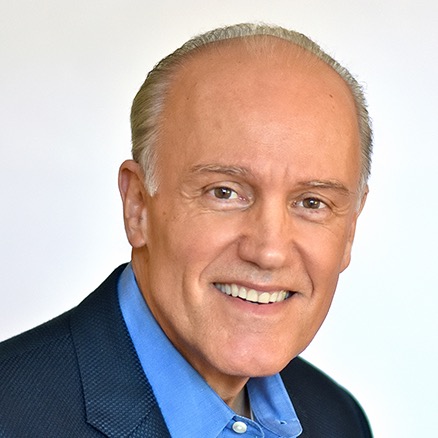“Key to avoiding patent forfeiture is to focus on the role of third parties in the process of commercializing your product. This is especially tricky for smaller companies, which have to depend on outsiders to test and improve their innovations.”
When I use a word, it means just what I choose it to mean, neither more nor less
— Humpty Dumpty (to Alice)
 It seemed like a trade secret trifecta when Congress in 2011 passed the America Invents Act (AIA). Although the statute was aimed at patent reform, it made three helpful changes in how trade secrets are treated. First, companies could hold onto secret information about an invention without risking invalidation of their patents for failing to disclose the “best mode” of implementing it. Second, the “prior user right” that guarantees continuing use of a secret invention, even if someone else later patents it, was extended to cover all technologies. And third, the law would no longer deny a patent simply because the inventor had already commercialized the invention in a way that didn’t reveal it to the public.
It seemed like a trade secret trifecta when Congress in 2011 passed the America Invents Act (AIA). Although the statute was aimed at patent reform, it made three helpful changes in how trade secrets are treated. First, companies could hold onto secret information about an invention without risking invalidation of their patents for failing to disclose the “best mode” of implementing it. Second, the “prior user right” that guarantees continuing use of a secret invention, even if someone else later patents it, was extended to cover all technologies. And third, the law would no longer deny a patent simply because the inventor had already commercialized the invention in a way that didn’t reveal it to the public.
Or so we thought. That last change depended on how you read the legislation. The long-standing requirement that an invention could not be “on sale” or “in public use” more than a year before filing a patent application was still there. But Congress added a qualifier to 35 U.S.C. §102: there would be no patent if the invention had been “in public use, on sale, or otherwise available to the public . . . .”
Before the AIA, the courts were strict about the consequences of choosing trade secret protection over patents. If the inventor used the invention for commercial purposes, the patent clock started ticking, even if the use was behind closed doors and did not inform the public about the invention itself. The same was true of a commercial sale of a product that used the invention, even though the contract of sale was confidential. The only real exception was for “experimental use” to refine the invention before it became ready for patenting. But even getting a prototype tested under a nondisclosure agreement could fail to qualify if there were other terms implying commercialization, like payment to the inventor.
The Forfeiture Doctrine
The logic behind this interpretation of “public use” was explained eloquently by Second Circuit Judge Learned Hand in Metallizing Engineering Co. v. Kenyon Bearing & AP Co., 153 F.2d 516 (2d Cir. 1946). An inventor may indefinitely “practice his invention for his private purposes of his own enjoyment and later patent it.” However, once an invention is “ready for patenting” the inventor may not “exploit his discovery competitively” for more than the one-year grace period; otherwise “he forfeits his right regardless of how little the public may have learned about the invention.”
The insertion in the AIA of the phrase “or otherwise available to the public” indicated that Congress intended to change this rule and to provide that only uses or sales that informed the public of the invention would bar a patent. This seemed apparent just from normal standards for interpreting English, in which “otherwise” should be understood to refer to the terms coming before it. In addition, during consideration of the legislation, sponsors of the bill had taken the floor of the Senate to express their views that the new phrase would have the effect of limiting patent forfeiture to situations where the public had been informed of the invention and not just enjoyed its outputs.
Most commentators (myself included) embraced this interpretation of the AIA. And so did the U.S. Patent and Trademark Office (USPTO), which in its official regulations concluded that new section 102 “does not cover secret sales or offers for sales.” It seemed as though companies considering patenting would be able to engage in a variety of transactions to bring the benefit of their innovations to the public without risking their right to patent, so long as they didn’t publicly reveal the specifics of their invention.
Choose Your Meaning
Alas, assuming this is what Congress intended, they weren’t clear enough about it. In a case that tested the assumptions of the IP community, the Supreme Court recently decided that the law on public use and sale had not changed with the AIA. In Helsinn Healthcare v. Teva Pharmaceuticals, the owner of a new drug gave exclusive marketing rights to another firm, more than a year before applying for a patent. The agreement itself was publicly announced, but the dosage information claimed in the patent was kept confidential. Although something like a “sale” had taken place, the invention had not at that point been “available to the public.”
No matter, said the Supreme Court. Citing to its opinions going back as early as 1829, the court emphasized the significance of a public “sale” that effectively put the invention in commerce and beyond the ability of the patent system to pull it back. Judicial decisions about public use and sale never required that the invention itself be revealed to the public; and such a long-standing and clear interpretation could not be overturned by the “oblique” language of the AIA.
So where are we now? First, it’s still true that trade secret protection received a big boost from the AIA, through its changes to the “best mode” doctrine and the broad extension of prior user rights, which allow a company that had been practicing an invention in secret to keep using it in spite of a later patent (so long as the location and scope of use don’t change). These amendments removed a significant amount of the “trade secret anxiety” that had been created by patent law.
Basically, companies are free to classify and protect information assets through secrecy, even if the information closely relates to a patented invention, without fear that their patent will be invalidated. And by choosing to use secrecy rather than patenting to protect their innovative technology, executives can still sleep soundly knowing that a later patent can’t block them from continuing to use that technology.
But what about those “secret sales” and “public uses” that aren’t fully public? What can be done to stay out of trouble as the enterprise moves from invention to commercialization? How can you preserve your option to choose between secrecy and patenting as you get closer to market introduction?
The 18-Month Secrecy Option
One general piece of advice is to file for a patent at the earliest time. (Your patent lawyer can help you decide when an invention is “ready for patenting.”) The AIA was designed to encourage and reward early filing, and one of the best ways to keep your options open is to file a provisional patent application. That application, and the non-provisional application that follows it, remain unpublished for 18 months, giving the business time to consider the relative advantages and drawbacks of a patent over a trade secret, as well as the scope of what might go into a patent and what might be kept out. At any time during the 18-month period the application can be pulled and the information maintained in secret.
Key to avoiding patent forfeiture is to focus on the role of third parties in the process of commercializing your product. This is especially tricky for smaller companies, which can’t always afford to optimize the innovation in-house but have to depend on outsiders to test and improve it. Here, the good news is that you are in control of the risk, so long as you are keenly aware of it. To claim the benefit of the “experimental use exception,” make sure that your external testing programs are focused only on refining the product, not getting paid for it. And require that all participants sign strong nondisclosure agreements.
As your company builds and executes its go-to-market plan, you will often want to sign up distributors, resellers and other partners ahead of a product launch. There’s nothing wrong with that in the abstract, but you need to pay attention to how those transactions might affect your right to file a patent on an important invention. Even if no product has actually changed hands, you might have engaged in a “sale.” And even if no one else knows the still-secret invention you want to patent, your use of it may be deemed “public.”
Yes, this stretches the logic inherent in English grammar. But what can I say? It’s the law.

![[IPWatchdog Logo]](https://ipwatchdog.com/wp-content/themes/IPWatchdog%20-%202023/assets/images/temp/logo-small@2x.png)

![[Advertisement]](https://ipwatchdog.com/wp-content/uploads/2024/04/UnitedLex-May-2-2024-sidebar-700x500-1.jpg)
![[Advertisement]](https://ipwatchdog.com/wp-content/uploads/2024/04/Artificial-Intelligence-2024-REPLAY-sidebar-700x500-corrected.jpg)
![[Advertisement]](https://ipwatchdog.com/wp-content/uploads/2024/04/Patent-Litigation-Masters-2024-sidebar-700x500-1.jpg)

![[Advertisement]](https://ipwatchdog.com/wp-content/uploads/2021/12/WEBINAR-336-x-280-px.png)
![[Advertisement]](https://ipwatchdog.com/wp-content/uploads/2021/12/2021-Patent-Practice-on-Demand-recorded-Feb-2021-336-x-280.jpg)
![[Advertisement]](https://ipwatchdog.com/wp-content/uploads/2021/12/Ad-4-The-Invent-Patent-System™.png)






Join the Discussion
One comment so far.
Paul Morgan
February 22, 2019 10:05 amGood article on the Sup. Ct. Helsinn decision on “secret sales” re AIA patents. The prior art status of a secret “on sale,” a secret sale of a product containing the invention, versus personal equitable estoppel for for commercial use of a secret process, has been widely confused, even by the PTO, as discussed at length with specific citations and discussions of controlling case law in “The Ambiguity in Section 102(a)(1) of the Leahy-Smith America Invents Act,” 2011 Patently-O Patent Law Review 29. The latter is the continued commercial use of a secret process to make and sell products that do NOT contain or disclose the invention. It is a purely personal forfeiture, not statutory prior art, under Metallizing Engineering doctrine Fed. Cir. case law. Some argued, and the PTO said in a footnote to AIA rule changes, that this AIA 102 statutory change in the definition of prior art also overruled the case law on the Metallizing Engineering doctrine, even though that doctrine is equitable, not statutory, and not prior art. But, contrary to some amicus assertions, this Sup. Ct. on sale decision properly did not even mention the Metallizing Engineering doctrine.